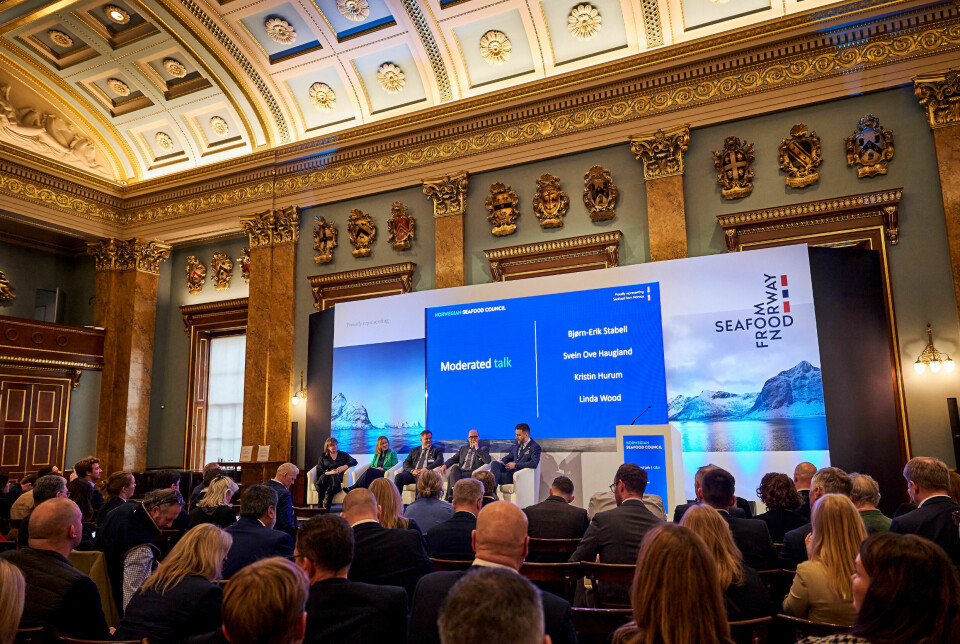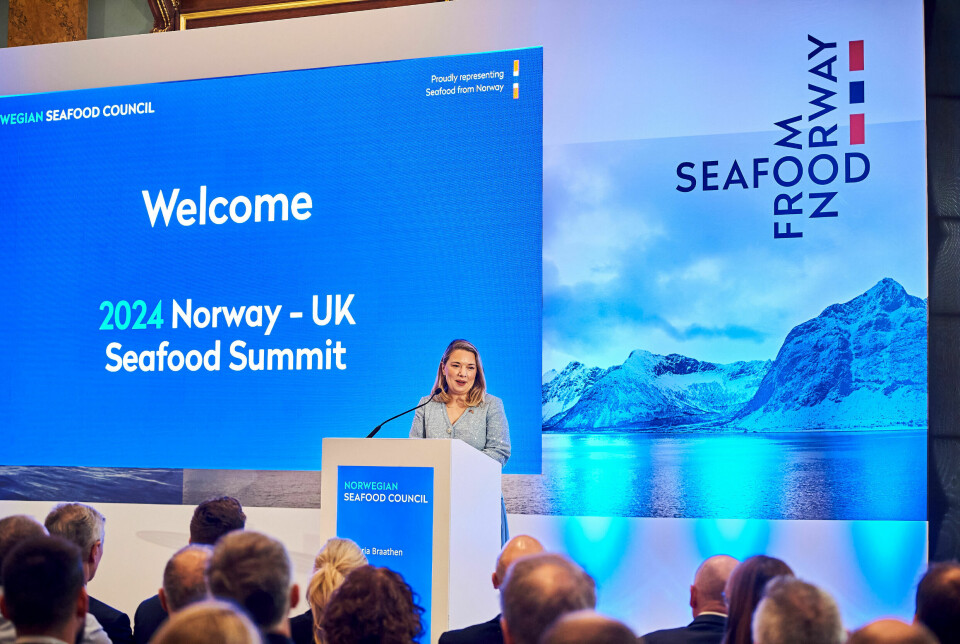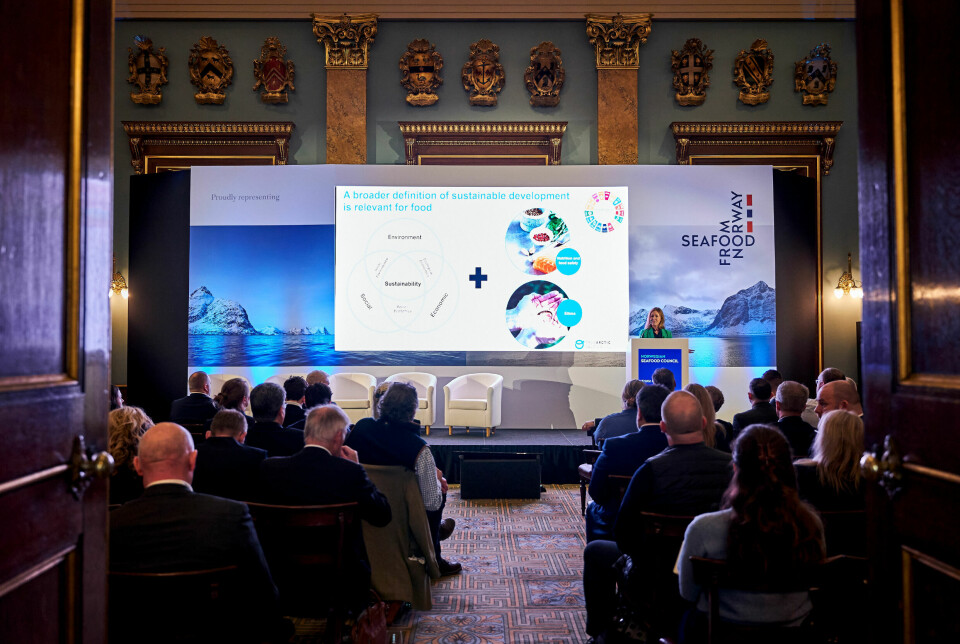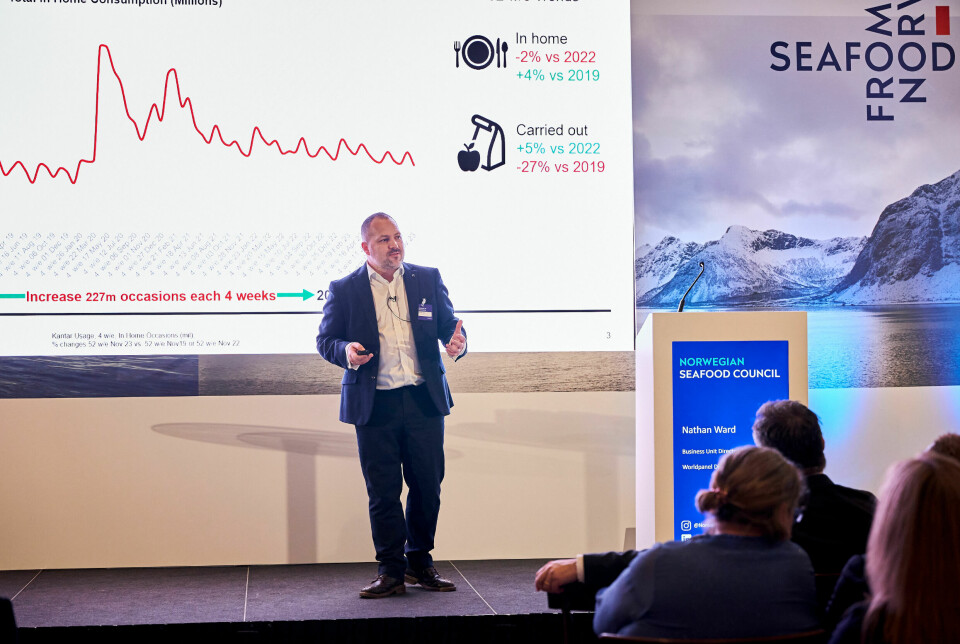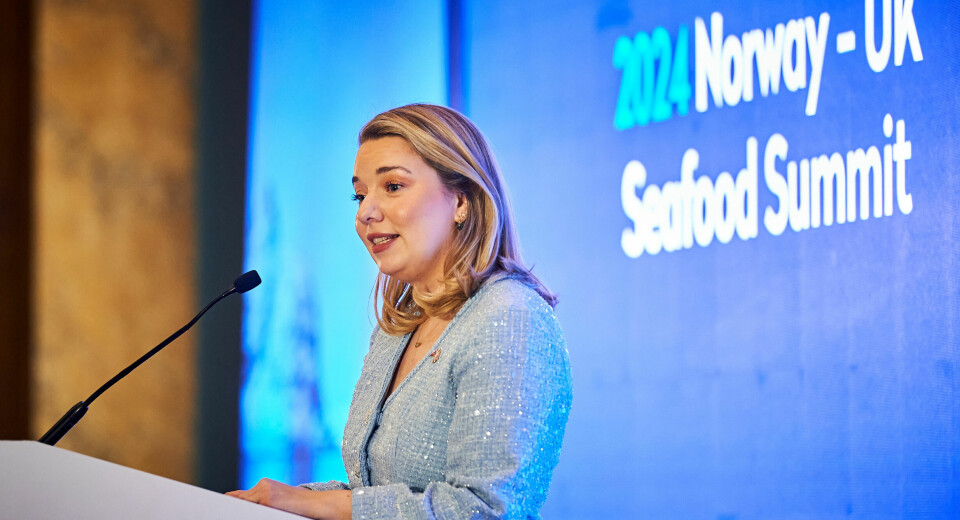
Large value and volume growth for Norway trout exports to the UK
Sales of Norwegian farmed trout to the United Kingdom increased by 84% in volume and 70% in value in the first two months of this year compared to the same period in 2023, although the amount of the fish imported remains modest compared to Atlantic salmon.
Norway exported 8,418 tonnes of salmon and 45 tonnes of trout to the UK in January and February, said Victoria Braathen, the Norwegian Seafood Council’s envoy in London.
“There is a decrease in volume of 6% for salmon and an increase in volume of 84% for trout,” said Braathen. “Measured in terms of value, there is an overall increase in the value of salmon exports to the UK of 8% and a value increase of 70% for trout. In tonnes there is a growth from 24 to 45 tonnes so far this year.”
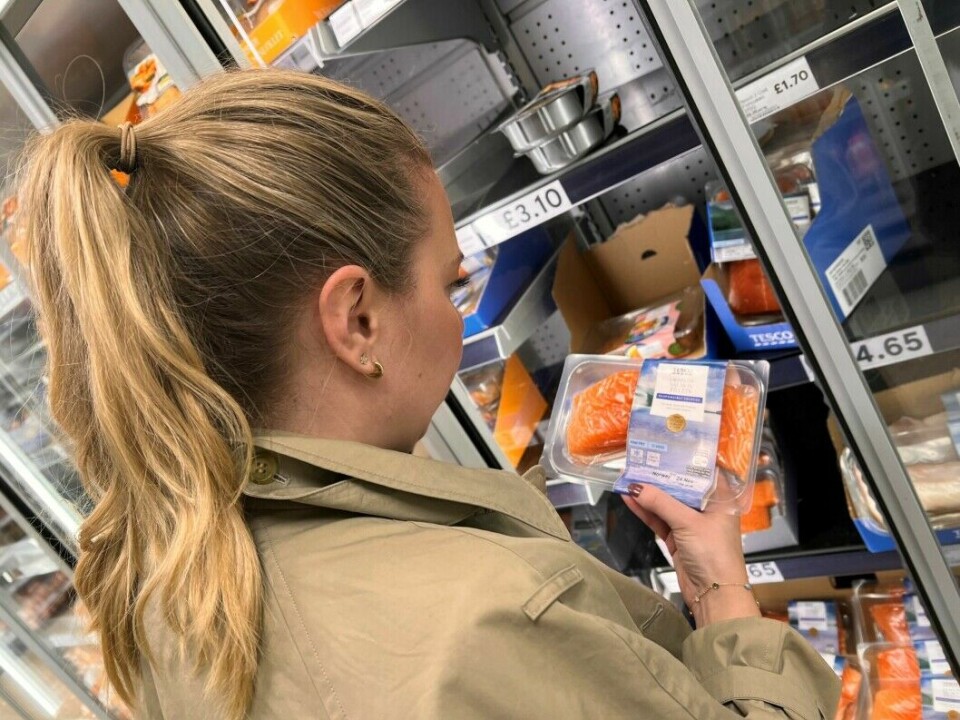
Norway is the largest exporter of seafood to the UK.
“In 2023, 64% of all salmon imports to the UK were Norwegian salmon, up from 59% in 2022. So far this year, seafood exports from Norway to the UK are at roughly the same level as last year, with volume growth of 1% and value growth of 6% in NOK,” said Braathen.
Fillets
If you look more closely at the development of various salmon and trout products, there is a 14% decrease in the volume of fresh whole salmon to the market.
“At the same time, we have an increase in the volume of fresh and frozen fillets of 186% and 89% respectively. Although trout for the UK is more of a niche product with small volumes, there is also volume growth for trout for fresh whole and fillet.”
When it comes to the coming months, Braathen points out that spring with Easter is traditionally an important period for seafood and especially for salmon.
“In times of high prices, the past year has shown that British consumers are simplifying their food consumption, in the form of cheaper alternatives, and use of fewer ingredients where simple dishes continue to be central.”
An established position
Health benefits are also an important driver for seafood, and this is a trend where salmon is strong. Unlike other types of seafood, salmon also has a unique position, with no nearby alternatives (substitutes). Other trends to note are the influence of ‘world’ cuisine with the use of spices, flavours, and vegetables, Braathen pointed out.
Braathen states that fillet products dominate in UK stores, together with smoked salmon.
“Within the sushi and sashimi segment, salmon has an established position. At the same time, making sushi at home does not have the same status as we know from other markets, and this is still a dish consumers treat themselves to outside or buy ready-made,” she added.
Two weeks ago, Braathen conducted the Norway - UK Seafood Summit 2024 in London.
“This is an annual event in London that brings together a wide range of Norwegian and British seafood actors,” said the envoy. “Given salmon’s position and importance in the UK, it was on the agenda along with discussions about future food production, the role of seafood, opportunities and important priorities also for groceries.”
Strengthening trade
Norway’s Fisheries and Oceans Minister Cecilie Myrseth opened the annual conference, which is organised by the Norwegian Seafood Council. Among the contributors were speakers from Cermaq Norway and retailer Marks & Spencer.
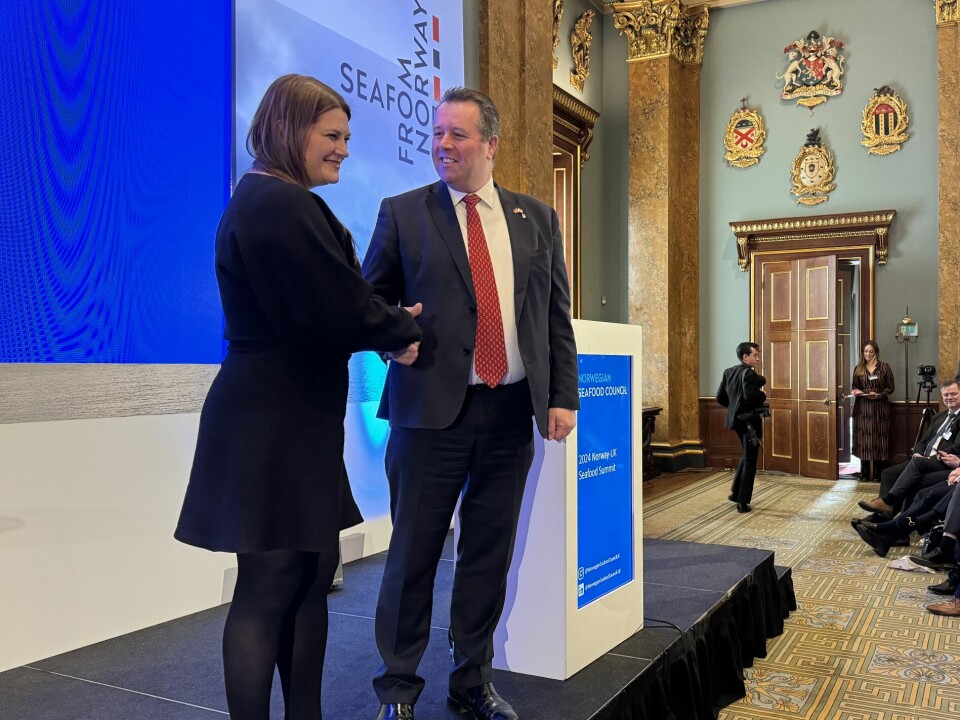
The UK’s Minister for Food, Agriculture and Fisheries, Mark Spencer, was also present and gave an introduction. The conference attracts around 200 players from the seafood sector and related industries, such as the fishing fleet, seafood producers, exporters, importers, suppliers, retail, catering and trade media.
“Bringing together the Norwegian and British seafood industries is important to strengthen the seafood trade between our two countries,” said Myrseth.
Braathen pointed out that close to 70% of seafood consumed in the UK is bought in stores.
“In the future, the Seafood Council will, among other things, focus on further opportunities within groceries and how we can work together with the industry on joint projects to promote Norwegian origin across species.”

